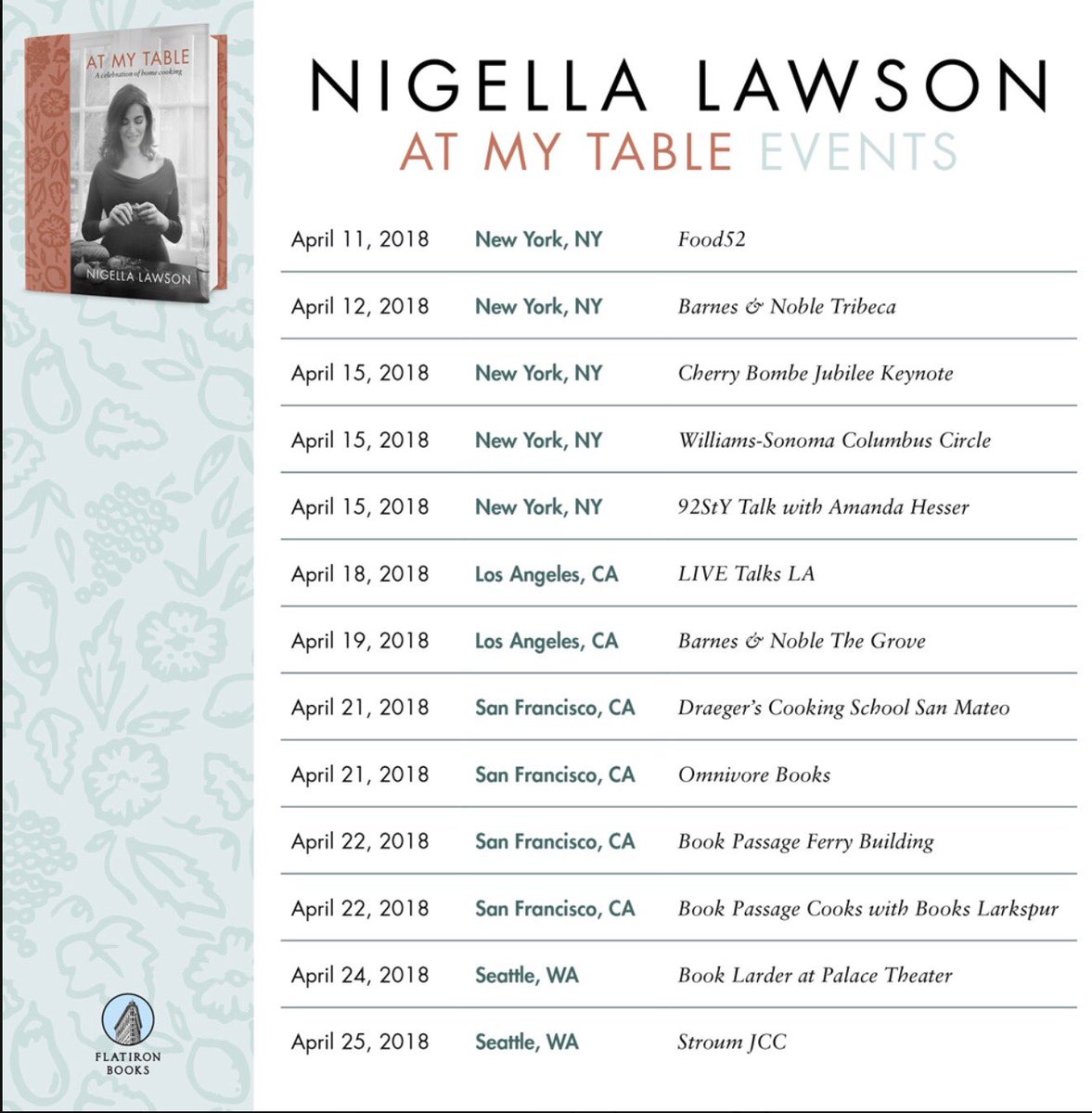THE WALL STREET JOURNAL
Eat Joyfully, and Other Wise Advice From Nigella Lawson
The eminent epicure welcomed us into her kitchen, where she opined on the pleasure of egg poaching, demented diets and how reading feeds her. Plus: her recipe for preserved-lemon and mint sauce
JOY OF COOKING Nigella Lawson at home in London. PHOTO: DYLAN THOMAS FOR THE WALL STREET JOURNAL
By Eleanore Park April 12, 2018 2:37 p.m. ET
Now a global household name with a social-media following of 5 million plus, the host of multiple TV shows, including “The Taste” and “Simply Nigella,” and a prolific, award-winning author, Ms. Lawson tends to approach cooking at home with an impromptu air. Her 11th cookbook, “At My Table” (Apr. 10, Flatiron Books), pointedly dispenses with traditional organization. “The messiness of having no chapters, no breaks in the run of recipes, felt so much more like the way I actually cook and live,” she writes in her introduction. We interviewed her at the heart of her London home, a welcoming space she described as “a kitchen with places to sit.”
The kitchen tools I can’t live without are: a fine Microplane grater and a mezzaluna. I use the Microplane for ginger, lemon zest and garlic. I don’t like garlic presses—they just give you fat wormlike pieces. With a microplane, you get such a fine pulp. It’s wonderful. I’m very clumsy when I cook, but with the curved blade of a mezzaluna, it always looks kind of showy.
My cooking mentor was: not any one person, but I was very influenced by Anna Del Conte. What I loved about her book “Entertaining all’Italiana” was that she wrote about the history of food with great intention and immediacy, particularly the recipes and the ingredients. It showed me a way that recipe books could be intellectual inquiries and reliable manuals. I think that is something all cookbooks need to have at their heart.
My pantry is always stocked with: Cretan olive oil and high-quality chocolate with 70% cocoa. You need really good dark chocolate to bake with, and I like knowing I can go downstairs and make a chocolate-olive oil mousse in a matter of moments.
The pan I reach for most is: a fantastic spun-iron pan called the Prospector from Netherton Foundry that’s around 10 inches. It’s real iron but has the weight of a nonstick skillet. I love being able to start something on the stove and then put it in the oven to finish. It’s a joy to cook in, and food looks beautiful in it as well.
The ingredients I’m most excited about right now are: preserved lemons. I can’t stop cooking with them. Whether in stews or on a tin of sardines, you suddenly have this sourness that has more depth than you get from a freshly squeezed lemon. Use a tiny bit of juice from the jar in place of olive brine to make a dirty lemon Martini. It has the sharpness of lemon but also this gorgeous headiness.
On weeknights, I typically cook: a butternut squash and sweet-potato curry. Chopping up things can be a good way of decompressing, and it’s so easy to make. There’s something particularly comforting about eating out of a bowl with a spoon versus a knife, fork and plate. And the dish is vibrant. I don’t want a blanket over my head, culinarily speaking. I want to feel invigorated and alive when I eat.
When I entertain, I like to: use my friends as guinea pigs. Recipes have to be tried out in real life. The more people you have to eat, the better. I always know that something works when people ask for the recipe.
A typical breakfast for me is: poached egg on dark German rye bread with extra-virgin olive oil, coarsely ground white pepper and Maldon salt. I’ve taught myself to poach eggs only recently. I can’t get over how wonderful it is to do.
A food trend I am totally over is: this tendency to venerate or demonize foods. I have nothing against people wanting to eat in a way that makes them feel healthy and well; that seems eminently wise. But I feel that any form of eating that involves self-persecution can only do long-term damage, however essentially healthy a certain food trend might be. When there are so many land mines and rules, you kill the sense of kinship with the body. It makes eating something fear-filled rather than joyful.
My approach to cooking is a lot like my approach to: everything in life. I hate too much authority and I’m not good at planning. I like to think on my feet, but I need a certain amount of structure. In cooking, I really love opening up the vegetable drawer to my fridge or my pantry cupboards and seeing what I’ve got, and just winging it and going for it. It gives me both the structure that I need and the opportunity to be spontaneous.
In addition to food, I’m obsessed with: books and reading. Writing and cooking are analogous, and reading is a form of eating. I need to be fed by books as well as by food. They are just as important to me.
A food I could happily have every day of my life is: bread, the cornerstone of civilization. It has to be good bread. There are times when a sandwich made of plastic sliced bread is quite right and proper, but generally speaking, I like bread with a bit of heft to it. I like a chewy crust. I can never get over the miracle of bread, which really only has two ingredients, wheat and water, in addition to air and time. I’m trying to make a lyrical case, but really I just like eating bread.
—Edited from an interview by Eleanore Park
Preserved Lemon and Mint Sauce
This versatile herby sauce is a “reworking of the old-fashioned vinegary mint sauce my mother used to make, using ingredients from my kitchen now,” said Ms. Lawson. She serves the sauce with lamb cutlets, roasted sweet potatoes or griddled halloumi cheese.
TOTAL TIME: 15 minutes MAKES: 1 cup
- 2 cups loosely packed fresh mint leaves
- 1 large garlic clove, peeled and sliced into 3 pieces
- 2 small preserved lemons, quartered, plus 2 tablespoons juice from the jar
- ½ cup olive oil
- Sea salt to taste
In a medium bowl, combine mint, garlic, preserved lemons
In a medium bowl, combine mint, garlic, preserved lemons and juice, and half the olive oil. Use an immersion blender or food processor to blend until most of the leaves have been incorporated. Pour in remaining oil and continue to blend until you have a deep-emerald, emulsified sauce. Taste and add more salt, if you like, though the preserved lemons will likely provide all the salinity you need.
—Adapted from “At My Table” by Nigella Lawson (Flatiron Books)
















